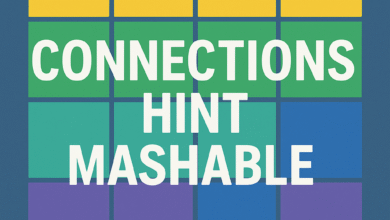The Complete Guide to Becoming an Effective Gimkit Host

In today’s classrooms and virtual learning environments, engagement is the key to successful education. Teachers and educators are constantly looking for tools that not only teach but also captivate. One such tool that has gained massive popularity is Gimkit—a game-based learning platform that turns quizzes into fun, competitive games. At the heart of every successful Gimkit session is a Gimkit host who organizes, manages, and elevates the game experience.
Whether you’re a teacher, tutor, or even a student leading a study group, learning how to become a skilled Gimkit host can transform the way knowledge is delivered and received. In this article, we’ll explore what it means to be a Gimkit host, how to host games effectively, and best practices for maximizing student engagement and learning outcomes.
What Is a Gimkit Host?
A Gimkit host is the person who initiates and controls a Gimkit game session. This person selects the quiz content (known as “kits”), configures game settings, and monitors player progress during the game. The host has full control over the game’s environment, including game duration, question types, power-ups, and the leaderboard.
Gimkit was originally created by a high school student, and its core purpose is to provide a more interactive and gamified method of reviewing or learning academic material. Unlike traditional quiz games, Gimkit offers various modes and features that can make each session unique. The host is responsible for tailoring these options to best suit their audience.
Why Choose Gimkit for Learning?
Before diving deep into the hosting aspect, it’s important to understand why Gimkit is such a powerful tool for education:
-
Game-Based Learning: Students learn better when they’re having fun. Gimkit’s point-based system encourages active participation.
-
Customizable Content: Hosts can create their own kits or choose from thousands of pre-made quizzes.
-
Real-Time Feedback: Players receive instant feedback, and hosts can track performance analytics.
-
Variety of Game Modes: With modes like Classic, Trust No One, and Infinity Mode, no two sessions have to be the same.
These benefits make it crucial for the Gimkit host to be well-prepared and adaptable.
How to Become a Gimkit Host
Becoming a Gimkit host is simple, but effective hosting requires more than just pressing “start.” Below are the steps you need to follow to host a Gimkit game:
Step 1: Create a Gimkit Account
To start, go to www.gimkit.com and create an account. While basic hosting features are available for free, upgrading to Gimkit Pro gives you access to more advanced game modes and analytics tools.
Step 2: Create or Choose a Kit
Kits are the quiz sets used in games. You can:
-
Create your own kit by adding questions manually.
-
Import questions from Quizlet.
-
Choose from the public library of pre-made kits.
Make sure the kit aligns with the topic you want to cover and is appropriate for your players’ grade level.
Step 3: Select the Game Mode
Click the “Host” button next to your chosen kit. You’ll be prompted to select a game mode. Popular choices include:
-
Classic Mode: Each player works individually to earn as much in-game money as possible.
-
Team Mode: Players are split into teams to encourage collaboration.
-
Trust No One: A social deduction game mode where players must figure out who the impostors are while answering questions.
As a Gimkit host, choose the mode that best fits your group’s dynamics and educational goals.
Step 4: Customize Game Settings
Once you’ve chosen a mode, you can adjust the game’s settings. These may include:
-
Time limit
-
Cash goal
-
Power-up availability
-
Music and visual themes
These settings help create the right environment for your session, whether it’s competitive, relaxed, or exploratory.
Step 5: Share the Game Code
After configuring your settings, you’ll receive a unique game code. Share this code with your players. They can join the game by going to gimkit.com/join and entering the code.
Once all players have joined, you can begin the game.
Best Practices for a Successful Gimkit Host Experience
While the technical steps are straightforward, being an exceptional Gimkit host takes skill, preparation, and awareness. Here are some tips to help you succeed:
Know Your Audience
Adapt your kits and game modes to the needs of your group. Younger students may prefer fast-paced, simple games, while older students might enjoy strategic or competitive modes.
Test the Game First
If you’re new to Gimkit, run a test game on your own or with a colleague. This helps you get comfortable with the platform and identify any potential issues before going live.
Set Clear Expectations
Explain the game rules, how scoring works, and what behaviors are expected. This ensures everyone starts on the same page.
Encourage Participation
Use positive reinforcement during the game. Call out top performers or players who improve rapidly. Consider offering small prizes or incentives to keep motivation high.
Analyze the Results
After the game ends, Gimkit provides detailed data on each player’s performance. Review this information to identify learning gaps, question difficulty, and overall comprehension.
Advanced Features for Gimkit Hosts
Once you’re comfortable with the basics, try exploring Gimkit’s advanced features:
-
Assignments: Let students play asynchronously at their own pace.
-
Class Rosters: Add students to specific classes for easier management and tracking.
-
Reports: Download performance reports for grading or review purposes.
-
Custom Power-Ups: Modify or create unique power-ups to add variety.
These features allow a Gimkit host to move beyond simple review games and incorporate Gimkit into a full learning strategy.
Common Mistakes to Avoid as a Gimkit Host
Even seasoned users make mistakes from time to time. Watch out for these common pitfalls:
-
Overcomplicating Game Modes: Stick with simple setups until you and your students are more familiar with the platform.
-
Ignoring Time Limits: Make sure your session fits within your available time frame.
-
Not Reviewing the Kit: Always preview your questions for accuracy, clarity, and difficulty.
-
Skipping Post-Game Review: Use the data to guide future instruction and address problem areas.
Who Can Be a Gimkit Host?
While Gimkit is most commonly used by teachers, anyone can be a Gimkit host, including:
-
Students: Leading review sessions or study groups.
-
Tutors: Reinforcing concepts in a fun way.
-
Parents: Supporting learning at home.
-
Corporate Trainers: Adding engagement to employee training.
The platform is flexible enough to serve a wide range of educational and training needs.
Read also: Nowcollege 1v1: A New Era of Competitive Learning and Digital Engagement
Conclusion
Being a Gimkit host is more than just a technical role—it’s a chance to create dynamic, interactive learning experiences that motivate and inspire. With the right preparation, creative game setups, and attention to student needs, you can turn even the most complex subjects into exciting challenges.
Whether you’re hosting a classroom review, a group study session, or a remote learning game, your role as a Gimkit host sets the tone for the experience. By mastering the platform and focusing on engagement, you’ll not only improve learning outcomes but also make the process enjoyable for everyone involved.



